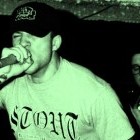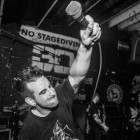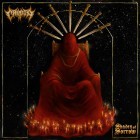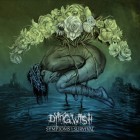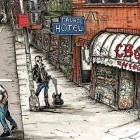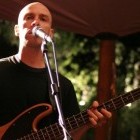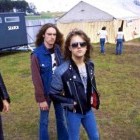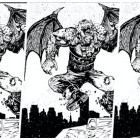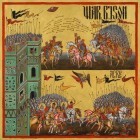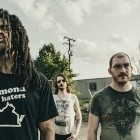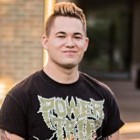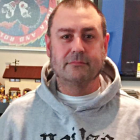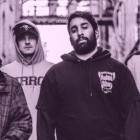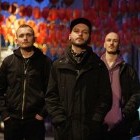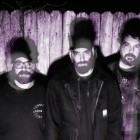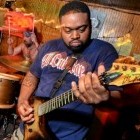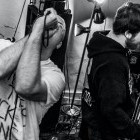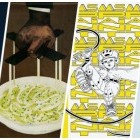I know I'm not alone when I say that when I first saw photos of Sammy Siegler on those early Revelation Records releases he appeared on, I was shocked at how young he looked. Not that the other guys in Youth of Today, Side by Side, and Judge looked so much older, but Sammy was clearly younger, and being that I'm only two years his junior, it was so eye-opening to see a contemporary of mine doing such cool shit.
In the years since playing on those seminal hardcore records, Sammy has gone on to build a beautiful life for himself in and outside of the music scene. In addition to his work in such bands as Rival Schools, CIV, Glassjaw, and World Be Free, he's a happily married husband and father, living out here in Los Angeles. His next journey will see him joining Shelter on a run of US dates starting in May.
Last week, I met Sammy for lunch in Santa Monica and I brought an audio recorder along with me to capture my chat with the drummer. We didn't cover all of his musical endeavors, but I promise to do that at another time. For now, enjoy this walk down memory lane.
Tell me a bit about your early upbringing in Manhattan.
I grew up on 15th St. between 5th and 6th Avenues. It's like just west of Union Square Park, so you know, it was pretty funky back then [laughs]. My parents bought this loft that was like an artist co-op, a totally funky loft. The neighborhood was not very desirable at the time, but it was cool. I could skateboard because it had these great wood floors. I was born in New York City, and the first place that I went to from the hospital was where Jimi Hendrix died. It was on West 12th St. We moved in and lived there for like a year or two and then my parents bought the place of 15th St. Being just north of 14th St. kind of adds a different twist. It was before Chelsea was sort of desirable and cool. Let's see... I went to a small school called the Fifteenth Street School and then Village Community School on West 10th St.
Your parents owned a moving business, right?
Yeah, my great-grandfather started this moving and storage business called Siegler Brothers on West 11th St., in the heart of Greenwich Village, in 1895. They bought this building back then that used be like a horse stable kind of thing. They also owned a fireplace store on Greenwich Ave. called Siegler Fireplace Equipment. And then on West 11th St. there was this warehouse which my dad and his brother ran, and my grandfather and his brother ran, and my great-grandfather and his brother ran. But when my parents got divorced when I was like nine, my dad moved into the warehouse, took one of the floors, threw up a wall, and kind of made it his bachelor pad, midlife crisis spot [laughs]. But what was cool about it was that we were able to play drums in there. That's where we wrote a lot of [Judge album] Bringin' It Down. We also wrote a lot of [Youth of Today EP] Disengage and [Youth of Today album] We're Not In This Alone there for free. That's also where the photo for the back of the Disengage 7" was taken on those steps.
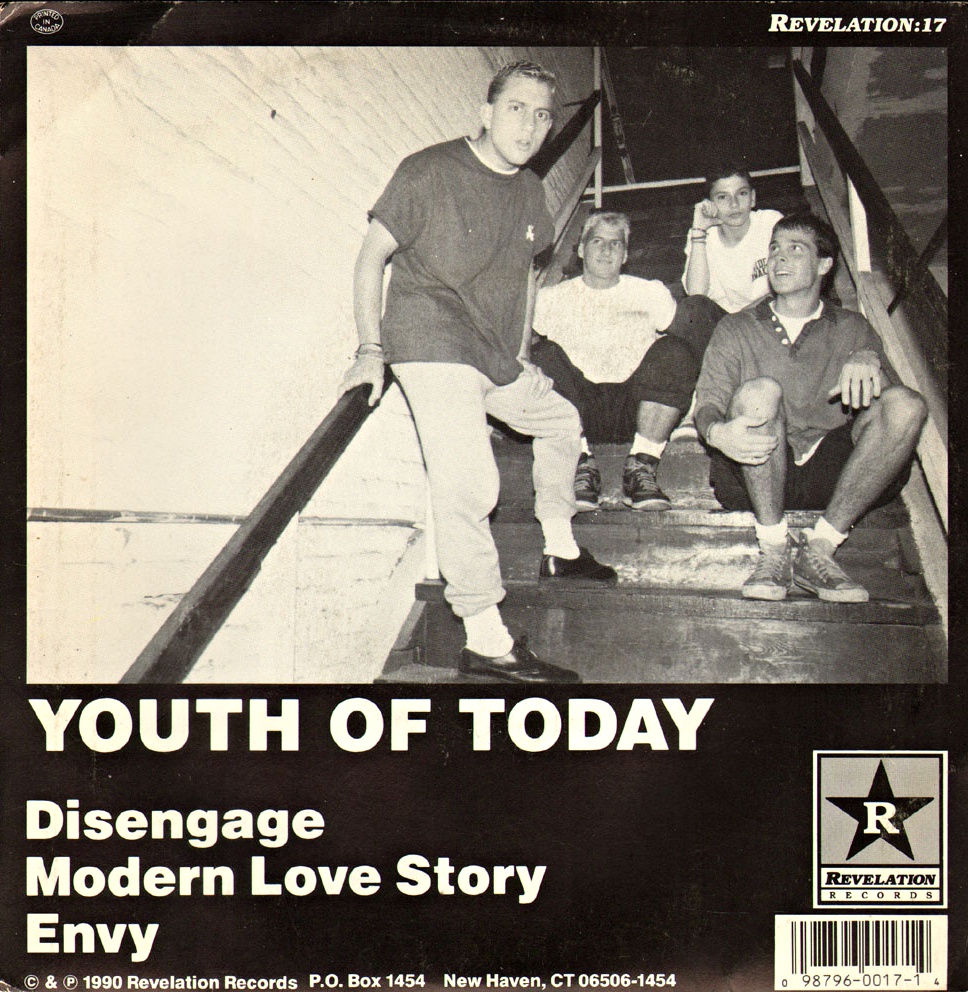
Rehearsal space in Manhattan is golden, let alone free rehearsal space!
I think about why I was in a lot of these bands. I mean, I think a lot of it was I had a drum set. I had a place to rehearse. I could sort of play [laughs]. And I guess I was easy to be around [laughs].
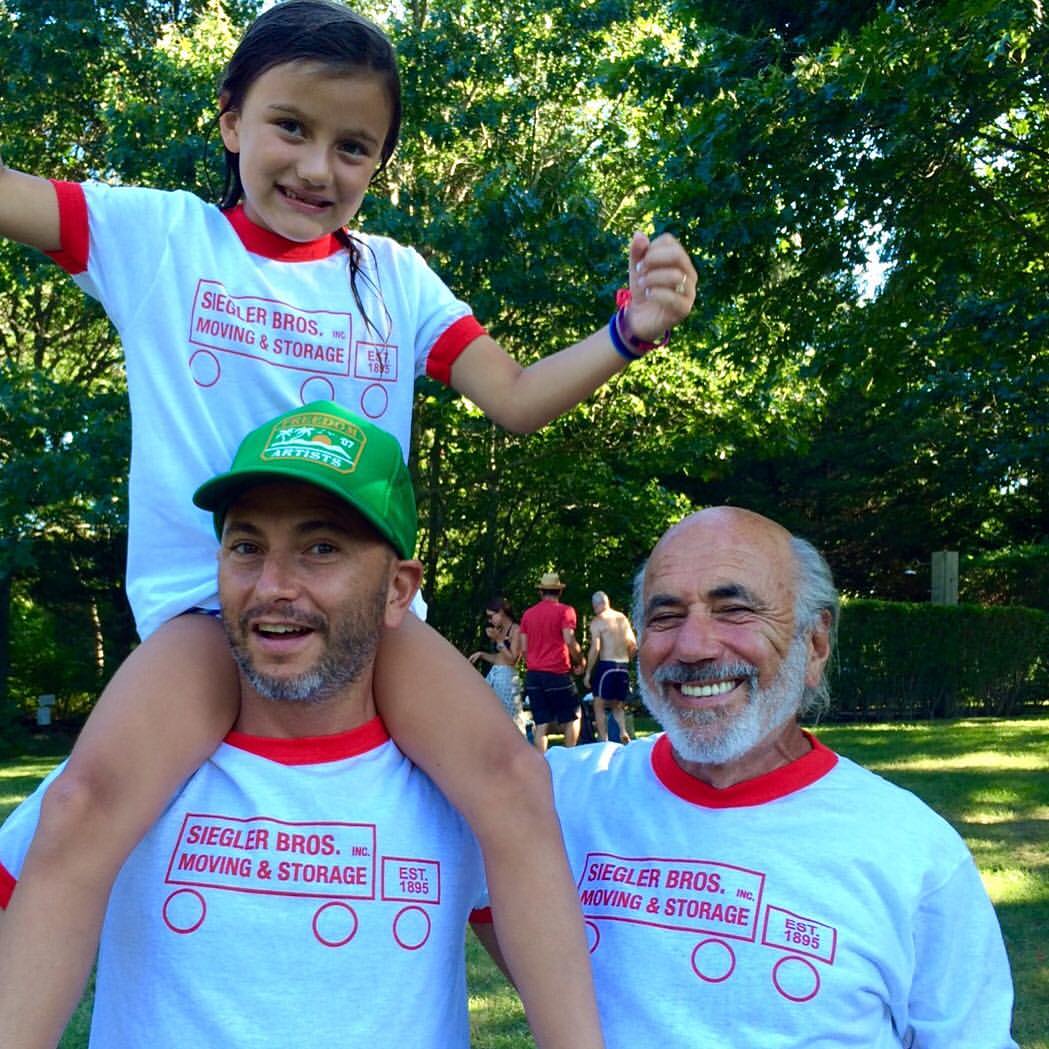
It's interesting because a lot of the folks from the first and second wave of NYHC came from outside of Manhattan.
The Queens thing was huge for sure. Like, there's definitely something going on in the water there, from Murphy's Law, Gorilla Biscuits, Token Entry, you know, all that stuff. And you know, Brooklyn kind of had that [heavy metal club] L'Amour's sort of metal edge, I guess. It was really interesting with hardcore because I think everybody gets into it for all kinds of different reasons. There's people that were living on the streets that were fucking dealt a really tricky hand. And there were people like me who were kind of middle class. One of my best friends who kinda got me into punk was Matt Pincus, who played bass in Judge. He came from a lot of money. His parents did really well. So, it was just kind of like a mix of different backgrounds, really.
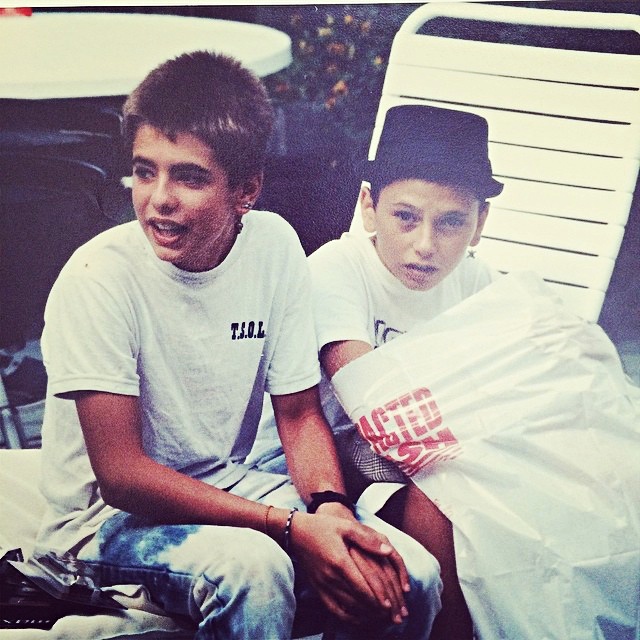
How did hardcore enter the picture for you?
My sister is three years older and she knew these kids that went to Stuyvesant High School. These guys were named Alex [Valenti] and Toby [Sorenson] and they later ended up being in the Skadanks. Anyway, my sister kind of hooked me up with these two older guys when I was probably like 11 and kind of into punk. I didn't really know what it was yet, you know? I had the Sex Pistols record and kind of just figuring it out. One of the guys had a band called Noise Police and I joined. We played everything from reggae to ska to punk. I remember they covered Agnostic Front's "Power" and that was probably like one of the first times I heard New York hardcore. Anyway, we played a bunch of really weird shows around New York City. We played a thing called Founder's Day in Stuyvesant Town. We played a show on the Circle Line Ferry. All these kids were doing acid. One kid jumped off the boat, some other kid jumped through like this plate glass window. There was like a mosh pit on the Circle Line Ferry [laughs]. I remember smoking pot with them and totally get rocked off that. It was just a great experience to be playing in a band and doing shows at that age.
SEE ALSO: Queens, New York: A Look at NYHC Ground Zero
You were so much younger than everyone else in the scene, so how did you get in with all of the NYHC people back then?
One of my friends met Dylan, who is the brother of Walter Schreifels (Youth of Today, Gorilla Biscuits, Quicksand, Rival Schools), and he told me that his brother's band was called Gorilla Biscuits and they needed a drummer. So I hooked up with those guys that way. This was in 1985, so I was 12. We rehearsed at my dad's warehouse. I think Ernie [Parada] had been playing with them before me, but he left to do Token Entry. I remember we had this different version of "Better Than You" that was almost reggae [laughs]. We had a song about Mr. T, so there was definitely a wacky element to what we were doing. Our good friend, [Discipline, Oceans of Mercy singer] Gus [Peña], was kind of like our mascot. He would hang out all the time. Anyway, GB played a show at the Right Track Inn in 1985 and that where everything popped off for me. I think it was the first show where Cripped Youth became Bold. That's where I met Jason Krakdown. I stayed in Jackson Heights in Queens, where Walter and Dylan lived. But yeah, I met a lot of characters from the scene that night.
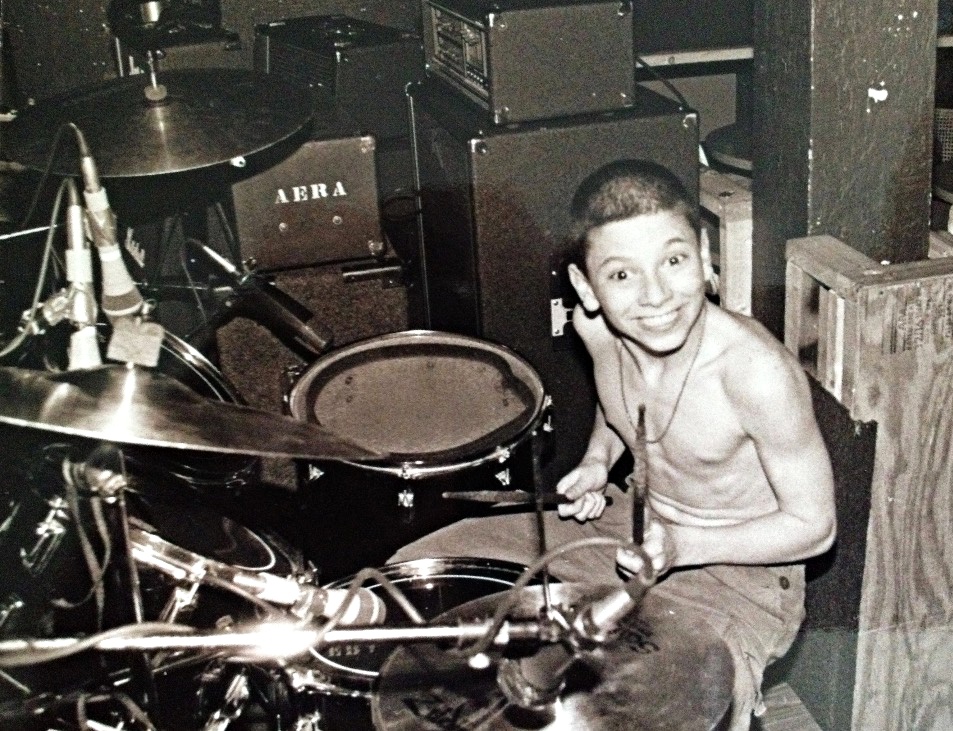
How did you come to join Side by Side?
I had another friend who met Jules Massey, the singer from Side by Side, on the tram going to Roosevelt Island. I know Jules is originally from Weehawken, NJ, but he might have lived on Roosevelt Island at that time. Anyway, but that's how I hooked up with Jules.
SEE ALSO: Interview with Todd Youth (FireBurn, Warzone, Agnostic Front, Murphy’s Law, Bloodclot)
I imagine your entire life revolved around hardcore during your high school years since you were playing so much and even touring.
That Youth Crew scene was me, 100%. Porcell (Youth of Today, Judge, Project X) was like a best friend and big brother. We were all about it, but I had a girlfriend who wasn't into that stuff at all. She was a club girl who worked at Mars Bar. So, I liked that. I liked experiencing different music scenes. I remember seeing an early KRS-One, Ultramagnetic MCs, and Poor Righteous Teachers show. Yeah, I was into a lot of other kinds of music, even back then.
What did your parents think of their teenaged son going off on tour and being in a band?
They weren't strict, but it all happened pretty naturally. My mom's house became the place to hang out. She liked the fact that we were there. When Billy from Side by Side broke his leg, he moved in with us for a few months. That was kind of like the NYHC clubhouse. She knew and liked all the guys, and she also knew that we were straight edge. I remember she took me to some early shows for me like the Dead Kennedys at the Ritz in 1985. She took me in a few times, but for the most part, my sister would come with me. I remember the first road trip I went on was with Side by Side and my mom gave me like $100 and said to call her if I needed anything [laughs]. But my mom trusted me because she knew my friends were good people.
What was your first recording experience?
I think that was "Violence to Fade" with Side by Side. We did that one song for the Together compilation. I think we recorded that in 1986. We did it with Don Fury. Right after that, it would have probably been the Side by Side 7". The first recording I did with Youth of Today was just a drum beat thing for a reissue of Can't Close My Eyes on the song "I Have Faith." It was a drum intro with Ray singing over it. I remember it was just me in a room at Don Fury's where he had a glass bubble thing for the drums. They're like, "Okay, play a beat and do some fills..." It's pretty unlistenable and out of time [laughs]. But that was an interesting experience. Some of those recordings make you cringe, but there's a charm to them.
It must have felt like a big deal to join Youth of Today.
Oh, I was a huge fan. Me and my friends would mosh to Break Down the Walls when it came out. When Side by Side got to open for Youth of Today on those weekend shows, it was amazing. When Mike [Ferraro, aka Mike Judge] quit to do Judge, I tried out for the band. Luke also tried out at the same time. Walter was really tight with Luke, so he wanted him for Gorilla Biscuits, and I was really tight with Porcell, so I ended up getting it. I was a dream come true for me.
What ended up happening with Side by Side?
You know, I don't really remember. There wasn't a big blowout or anything like that. I just think it sort of stopped. At one point Gavin [Van Vlack] quit and Alex Brown joined the band. But yeah, it kind of stopped. It sucks because I've always felt that Side by Side should have made an album.
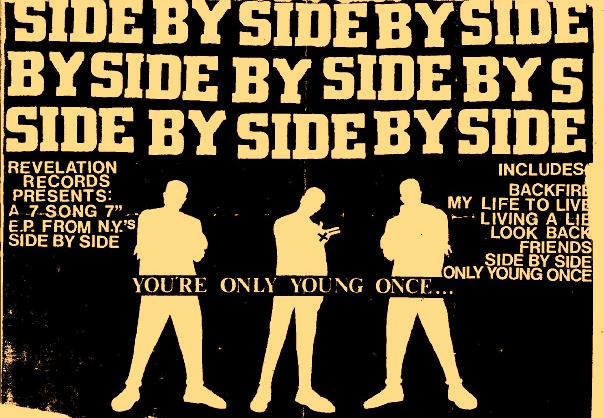
What's the story behind Project X?
I was playing in Judge by then. From my recollection, there was the song "Straight Edge Revenge," which I believe had been a Youth of Today song which they didn't end up using because it was so over the top [laughs]. Straight edge was taking a beating around that time. I remember there was a demo by a guy called Negative Youth that was all talking shit about us. It was actually really funny! [Laughs] I had the demo. So, yeah, there was a lot of shit-talking around the scene about the Youth Crew and straight edge. Stuff like "Ray Is Gay" graffiti, or whatever. Youth of Today wasn't like, "Oh yeah? Okay, we're going to one up you!" So, I think that's why Mike left to start Judge and be in-your-face about everything. I think Project X was Porcell and Alex's kind of answer to that.
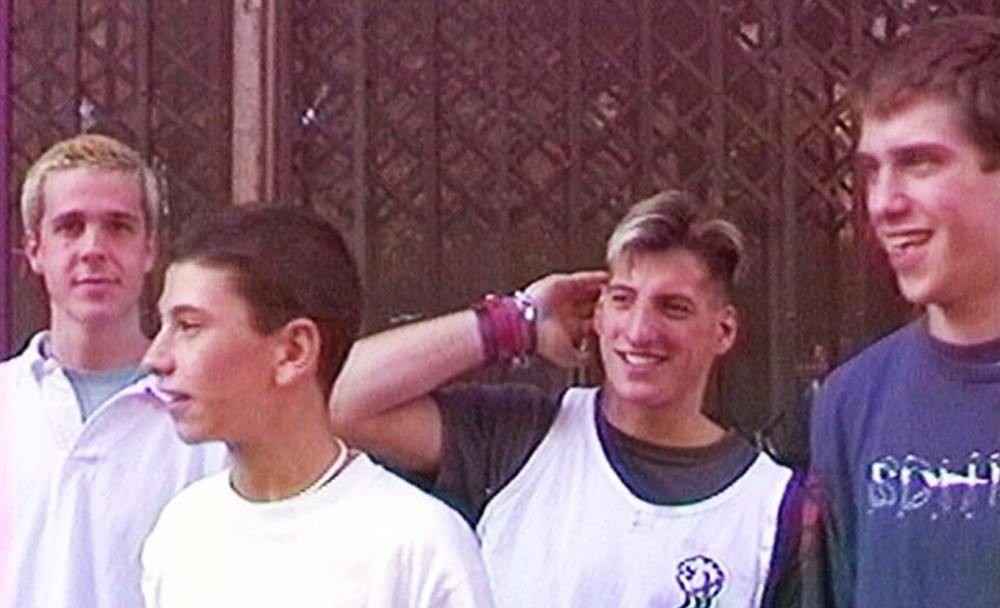
Alex and Porcell were also doing the zine Schism back then, so they wanted to launch it with a 7". We had Walter come in with the song "Dance Floor Justice." Youth of Today was banned from playing CBs at the time, so Project X had the song "Shutdown" because of that. It was a lot of fun. I remember Walter was always late to practice, so he got the nickname "ND" which stood for "No Dedication," but we told him it stood for "No Drugs." [Laughs] It was kind of tongue and cheek, but it was also kind of serious. We joked about making an called The Edge of Quarrel.
That Project X record came out in 1988, an era many people consider a golden one for hardcore.
To me, when I think about the New York hardcore scene, for me, my experience, looking back when it was really the most magical, if I had to pinpoint it, would be 1987. We were all doing shows at CBs and the Pyramid. Some Records was a record store that was kind of like a clubhouse for us. There were punks, skinheads, hardcore kids, straight edge, not straight edge. Warzone kind of teetered on straight edge sometimes, or maybe not [laughs]. You had bands like Gorilla Biscuits. You had Nausea. All these great fucking bands. Altercation, YDL... just a whole mix and it was kind of like this melting pot, musically. You had Sick of It all, who had a totally unique style. Underdog had their own style, you know, it all worked and we could all play together.
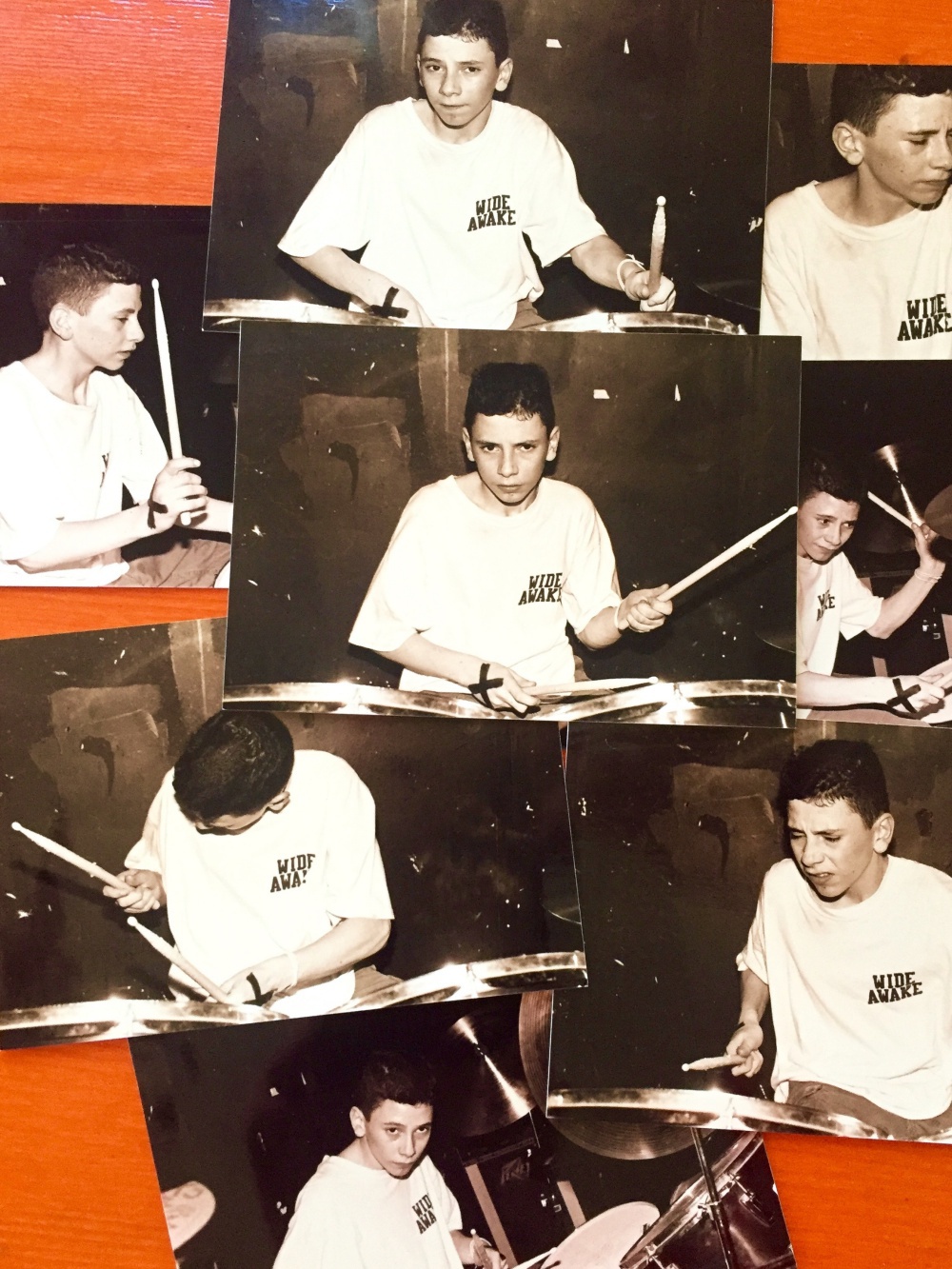
Todd Youth (Warzone, Murphy's Law, FireBurn) was telling me how a lot of the first wave NYHC guys hated on the Revelation Records era, but that he felt that bands like Youth of Today kept hardcore going strong in the late '80s.
There was a lot of competition in that scene. You had people who were nice to you, but who knew what they were saying behind your back. I think some of the competition added to the desire to make your band fucking awesome. I know I had it with drummers. I would go see Drew [Thomas] play with Bold at the Anthrax and he was doing some cool shit, and I would be like, "Man, I got to get better!" Forget about Mackie (Cro-Mags, Bad Brains, The Icemen) or Petey Hines (Murphy's Law, Cro-Mags, Handsome). Those guys inspired me to get better.
SEE ALSO: The Most Influential Figures of NYHC
I would be remiss to not bring up Judge's infamous Chung King Can Suck It record while we're talking today. What are your thoughts on that whole thing? Do you think the sound of the record is as bad as it's been made out to be throughout the years?
It sucks because I was just so young, you know, and we didn't have a lot of experience recording at the time. I don't remember being as bummed out about it as Mike and Porcell were. Looking back now, it sounds pretty thin. I think our expectations were high. For the most part, we recorded at Don Fury's studio, but all the bigger pro bands went to Chung King. You know, when you're in a band, you want to grow and you want to do what "they" do and that kind of thing. Slayer recorded at Chung King. The Beastie Boys and Danzig both recorded at Chung King. So, yeah, we wanted to do it, too. We knew the studio was in the neighborhood and it was bad ass. Let's do it.
All right, we're going to go to Chung KIng and we're going to make this fucking record. We spent a lot of time writing the songs and then we went in there and we probably didn't have the money to spend that much time on the sessions. We ended up getting a lot of interns working on it. We didn't really have a producer. We didn't even have an engineer with a vision that got the sound we wanted. They kind of left us there to our own devices and we didn't know what the hell we were doing, so we made this record, and it's just kind of not great.
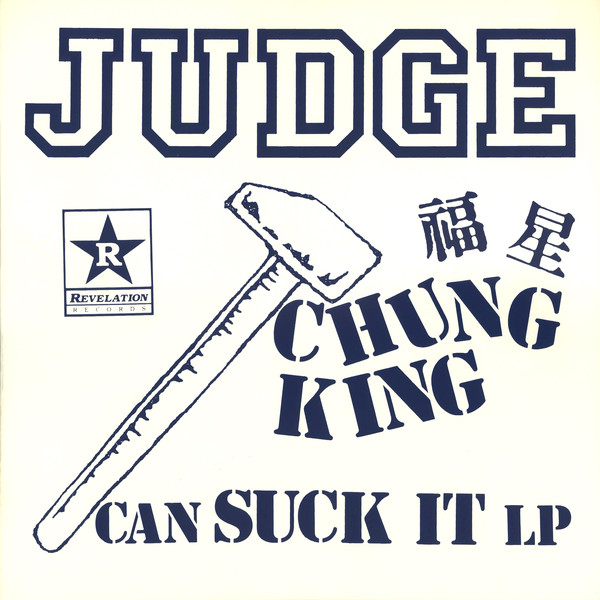
What happened next?
I think Jordan [Cooper] from Revelation had already got it mastered. Maybe the plates were cut or some expenses where made. I remember Jordan said, "I'll give you guys some money to re-record this somewhere else." Then the decision was made to print 100 of them and write "Produced by He Who Can Suck It" on there [laughs]. It was fucking genius but there was no thinking that it was going to be so rare and that one day it would sell for $9,000. We ended up doing the new recording at Normandy Sound, which was where the Cro-Mags, Killing TIme, Sick of It All, and New Kids on the Block all recorded. That was cool because Tom Soares, the engineer and producer there, he got it. He got the sound. He definitely did his own thing. Yes, he triggered a lot of the drum sounds and put reverb all over the place, but I'd rather have that than us just kind of floundering.
100 copies of Chung Can Suck It were made, so how many did each of you get from Jordan?
I think the band got like 5 copies each and then Jordan just kind of gave them to people. I don't own any copies of the record right now. I think I gave a copy to my friend Max. The rest I've sold. I have all sorts of cool hardcore records from back then, but I had a flood in my basement and I lost some of them. Stuff like the Bold 7" on clear vinyl, and some other gems, I lost in that flood. That coupled with the fact that I was going to have a baby, I decided to purge some of those records. I didn't need doubles and triples, test pressings, or whatever. I kinda wish I still had a Chung King Can Suck It but I sold my last copy for a lot of money a few years ago. I think I sold it for $3000, but I hear it goes for something like $9000 these days?
How did you go about selling your Chung King Can Suck It copies?
I sold one on eBay, but I didn't know what I was doing. I think the person bidding didn't believe that it was actually me, so I had to send him a picture of me holding it. It was a kid in Switzerland. I also had a friend who I helped sell a copy for. I remember for that one, the kid wanted to meet in NYC and I thought it might be a set up [laughs]. "I'm going to get jumped for a record," I thought. We ended up meeting at this public place and it was all good. He was one of the owners of [NYC hip-hop store] Fat Beats and he told me he was a hardcore collector and that he wanted to put the Chung King copy in his safe. This German dude is going to make a documentary on the whole Chung King thing, so that's really cool.
Staying on the subject of hardcore and commerce, merch is such a big thing now, but I wanted to get your thoughts on how it was back then.
I just passed this Champion store yesterday and it's so funny to see what the Champion brand has become. We just liked the quality of it back then. Alex Brown as an artist would make his own screens and that kind of thing. It was definitely a strong art component to it all, even back then. I remember in the '90s going to Japan for my first time with CIV and seeing the Bathing Ape store and there was a line around the corner. They opened the doors at 10:00 AM and by 1:00 PM that were sold out of everything and that was my first time experiencing that and now it's everywhere, obviously, with like Supreme and all that, but I think unconsciously, we sort of did it with hardcore.
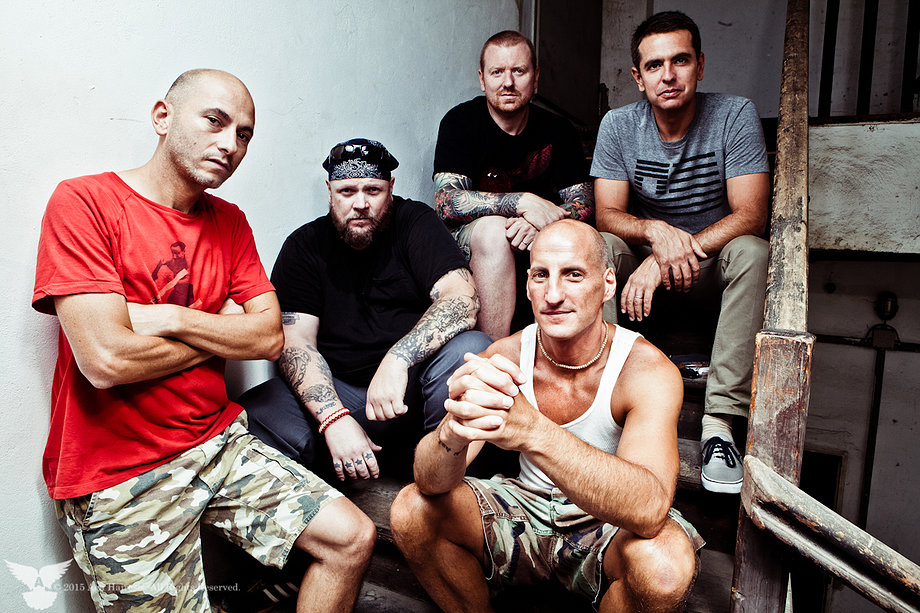
Were you guys going out on tour with a ton of t-shirt designs? I don't remember.
We would make a t-shirt for a specific tour and there would only be 200 of them. But no one was thinking that is what going to be worth a lot of money one day. It was really just Jordan having a lot of fun with the colored vinyl and all that. You know when I mentioned losing records in a flood, well, a similar sort of thing happened where I had this box at my mom's place and I think like a chipmunk or a rat or something got into this bag of my old shirts. The shirts were ruined. The only one I really wish I still had was a Side by Side original that I think Big Billy Bitter [aka Brian Clark] did the screen for. I know that he definitely did the design and there was probably like 30 of them made.
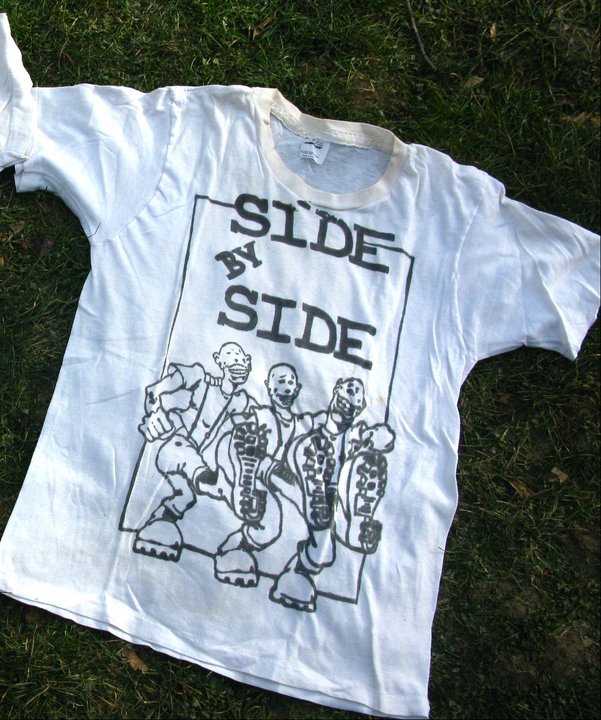
The Youth Crew look obviously caught on. I cover new bands on No Echo that still dress like that!
I think it was the Hundreds website where Anthony Pappalardo (In My Eyes, Ten Yard Fight) did an article recently about Youth Crew fashion. And again, it was unconscious, but we had our own little thing. Ray Cappo really pushed the envelope and some things didn't catch on and some things did. I remember at one point he started wearing these skin-tight biker shorts [laughs]. That didn't really catch on, but he went for it! I think Ray has always been a searcher. He was always into searching religion and spirituality. Searching fashion. He was into [rap group] Audio Two. He was into hip-hop. He was just a cool motherfucker.
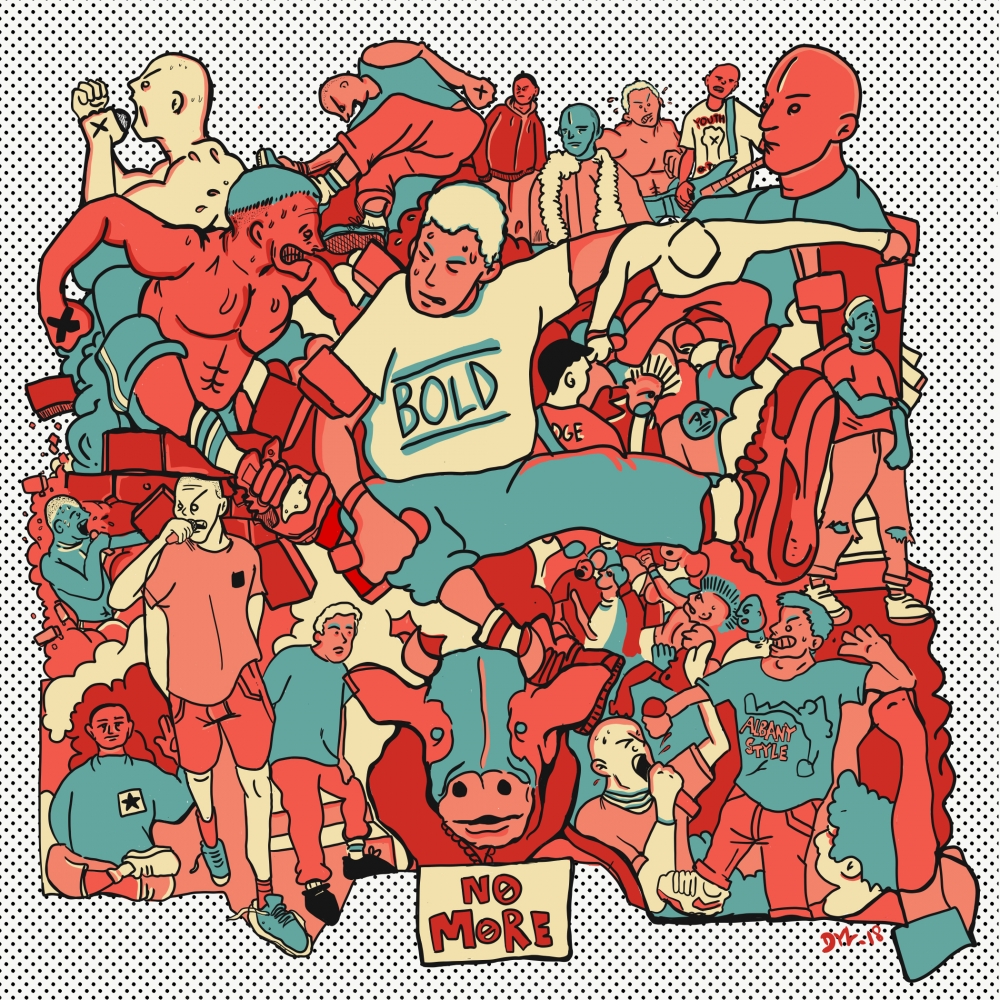
Tell me a bit about your history playing in Shelter.
So, I'm in Youth of Today touring Europe in 1989. Everything's awesome and I'm in my favorite band, except the singer [Ray Cappo], instead of hanging out with us and telling jokes, he's staying at a Hare Krishna temple. He eventually shaved his head and started to get deep into Hare Krishna. It was all leading up to it because on the '88 tour, he would occasionally stay at the Temple. Like I said earlier, Ray was always kind of a searcher and open to all sorts of stuff. He eventually decided to do this band called Shelter. Originally, it was with some of his friends from 76% Uncertain and they recorded at the Anthrax, maybe all in one day, or something crazy like that. That first Shelter album was awesome. Wait a minute, I might have actually been on the first Shelter stuff. Except. Wait, let me back it up for a second. I think I might be fucking up the timeline, but I might have played on the first Shelter thing. It might have been on the songs "Freewill" and "Saranagati."
You weren't in Shelter initially, but yes, you did record some drum tracks early on.
I think Ray just wanted Hare Krishnas in the band at that point. Vic [DiCara] joined the band, and in retrospect, that was my favorite lineup of Shelter when I wasn't in the band. That's when it was full-on Hare Krishna. Ray was on the cover of Maximum Rocknroll, or I think it was Shelter on the cover of the Village Voice and they were all in robes. You would go to see them live and there's incense burning on stage. That was really cool. I mean at the time I kind of felt threatened by it. I was like, I wanted my friend back. I wanted Youth of Today back, and all this shit, but in retrospect, that was pretty fucking cool. Dudes in Krishna robes playing hardcore. It was punk, dangerous, and badass.
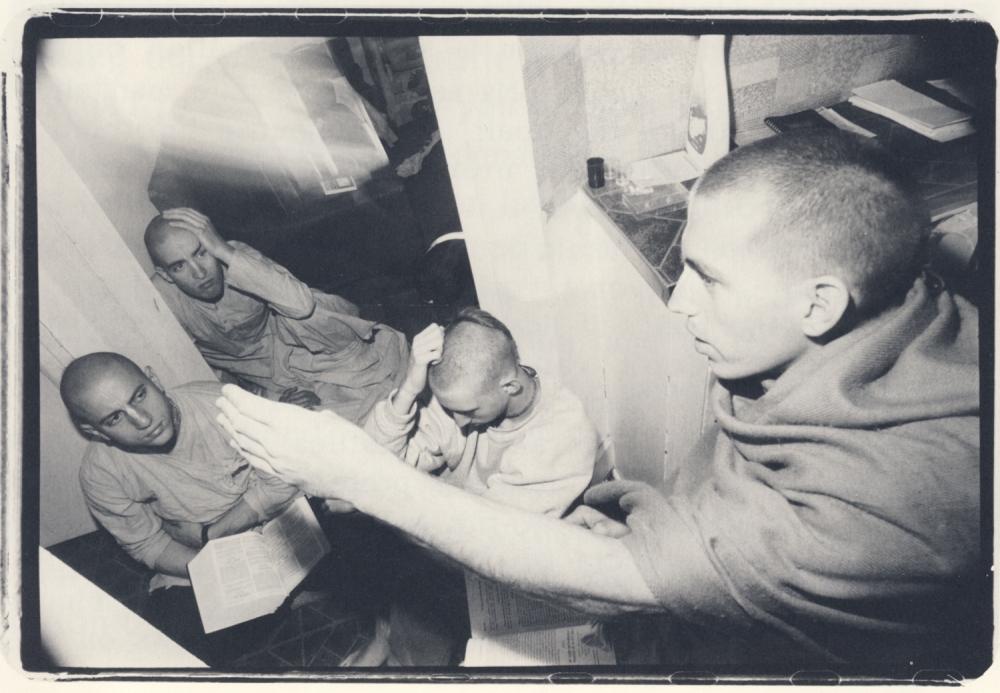
How did you end up joining Shelter?
I don't remember exactly when, but yeah, I ended up getting back in the band at some point. One like magical hardcore moment was when I was back in Shelter and I was somehow tasked, I don't know how I got the gig, but I was basically booking a tour off of a list of phone numbers that I got from a booking agent. I ended up booking a tour from my house which was to Minneapolis and back, and it was Shelter, Inside Out, and Quicksand. And so we did this fucking crazy tour where I was in Shelter and Zach de la Rocha is in Inside Out. Quicksand was traveling on their own, and Charlie Garriga was playing in the band at that time because Walter wasn't playing guitar. Anyway, we were traveling in a school bus filled with Hare Krishnas, and as a Winnebago filled with the Maharaja, who was like the leader, and there was this funky van with the non-Krishna guys like me, Porcell, who wasn't Krishna yet, and Zack and Alex [Barreto] from Inside Out in it.
Every morning of that tour, Ray was like the camp counselor. "Sam, we're leaving at 10AM and you're going to ride with the Maharaja today..." [Laughs] I didn't want to ride with him. I wanted to ride with my friends and tell dumb jokes! [Laughs] I was sitting with this older dude who was asking me stuff like, "So, what do you think is the meaning of life?" But it was a great lesson for me. I was like 18 at the time. I ended up being in Shelter again at some point later. We did a tour with Type O Negative that was a lot of fun. I helped write the Mantra stuff with them but didn't play on that album.
The following Shelter 2018 tour promo video was created by Sunny Singh at Hate5Six.com:
What is your relationship with the spiritual side of what Shelter represents? Were you raised a specific religion?
I had many long talks with Ray about it, and I definitely respected that. My personal thing on religion is like, it's great for some people who might need that at that point in their life. I'm kind of okay with it being more like a personal thing and sort of finding out through all of what I've experienced. Am I spiritual? Yes. Do I believe in one sort of end all be all person? Not so much. My mother is Lutheran, Pennsylvania, Dutch, German, Dutch, Irish, Welsh. My father's Jewish, Romanian-Russian. He had his bar mitzvah, but I never did. When I was a kid, I was exposed to it all, like, "This is Hanukkah!" This is a Christmas!"
I love going into Hare Krishna temples. I love hanging out with rastas. It's cool. I mean, just going into a Krishna Temple, it's got a special energy to it. For me, there's a positive energy to Krishna, like meditation, which is cool. There are so many aspects of it that are great, especially when we were all straight edge. It's like you're already don't drink, you already don't do drugs, you're already vegetarian. Karma is an easy thing to get your head around, so you're kind of halfway there and I think that's why Ray had such an ability to get so many kids into it. It was like, "You're already there, man. Now come meet me at the temple." He's got a special thing and it's pretty wild to be around.
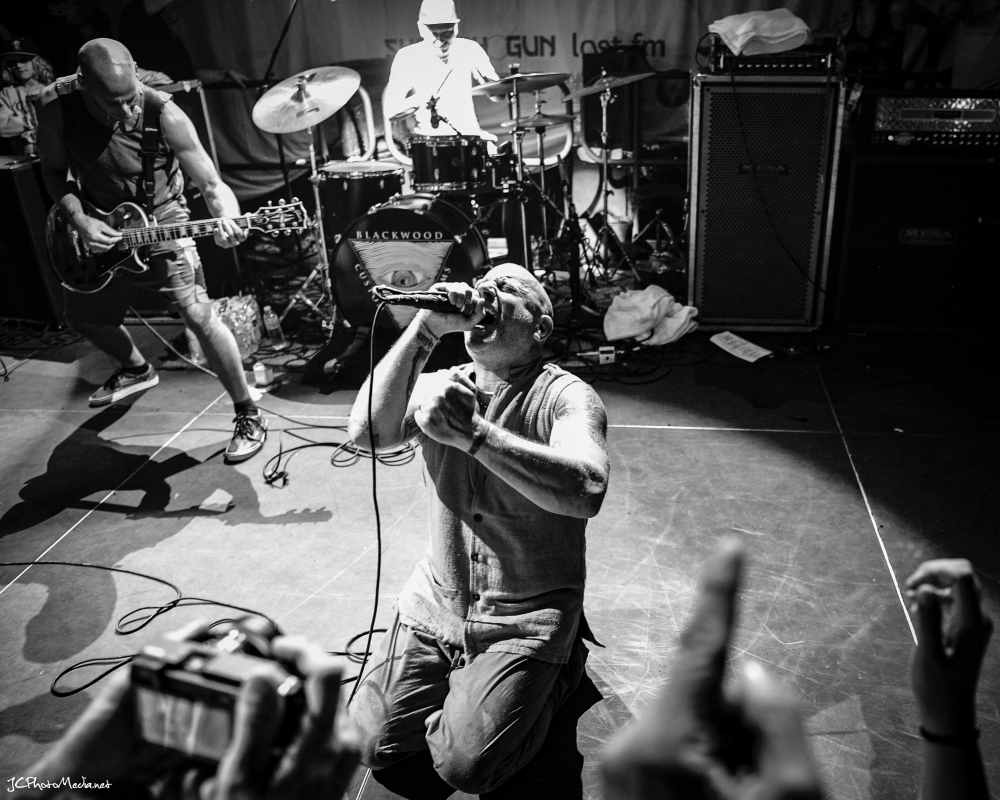
Shelter is about to go out on a run of US tour dates this May.
We played This Is Hardcore last year and it's great going back to those songs. I think the Shelter stuff is awesome. Ray is in great shape and is a yoga instructor. Porcell is also in great shape, you know, doing handstands all the time [laughs]. Those guys are so inspiring. Every band has their different phases, but when I think of Shelter, I love when it was dangerous and less poppy. My favorite is the earlier stuff. That's where I try to steer the setlist.
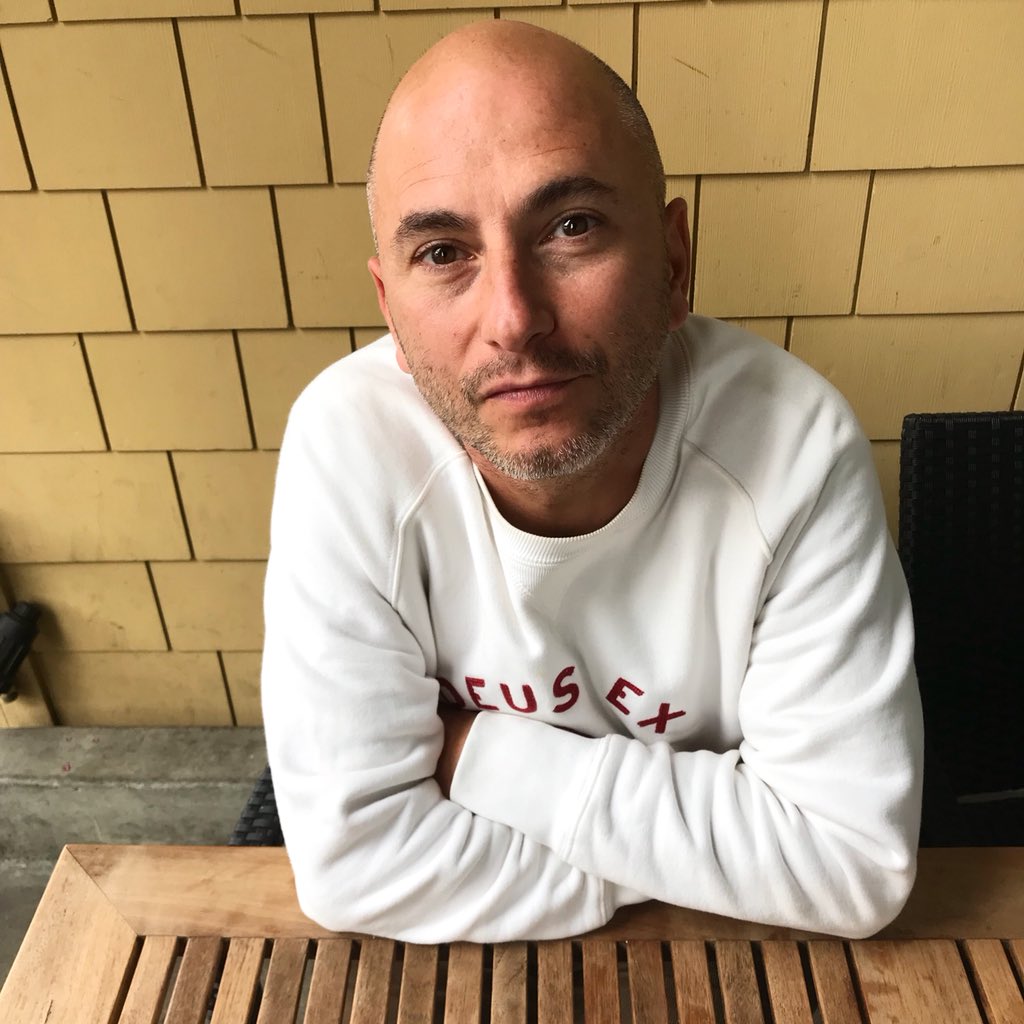
***
Shelter's US tour run will start on May 31. All dates for that run are listed in the graphic below. World Be Free recently dropped a previously unreleased track called "In Changes" on a flexi that was included in the debut issue of Pressure Drop, a new zine from Andrew Kline (Strife, World Be Free, Berthold City), Scott Vogel (Terror, World Be Free), and Reaper Records founder Patrick Kitzel.
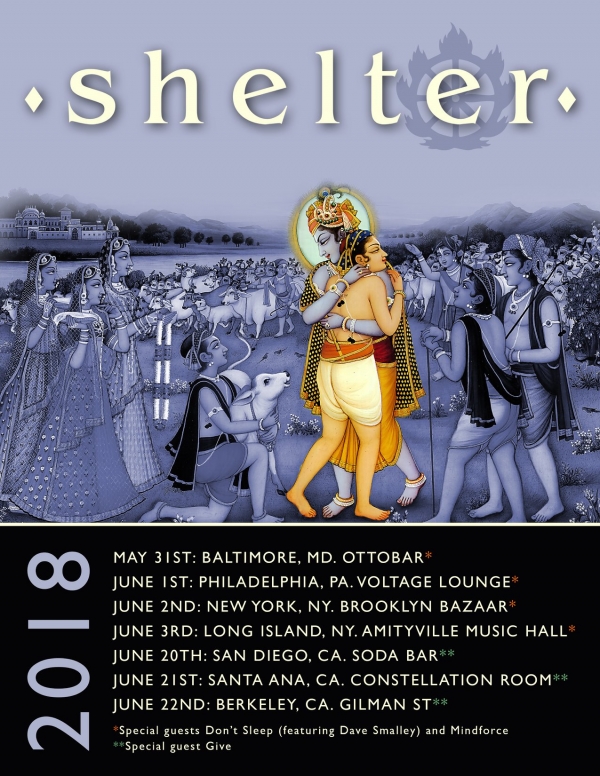
Tagged: glassjaw, gorilla biscuits, judge, nyhc, rival schools, sammy siegler, shelter, side by side, youth of today
